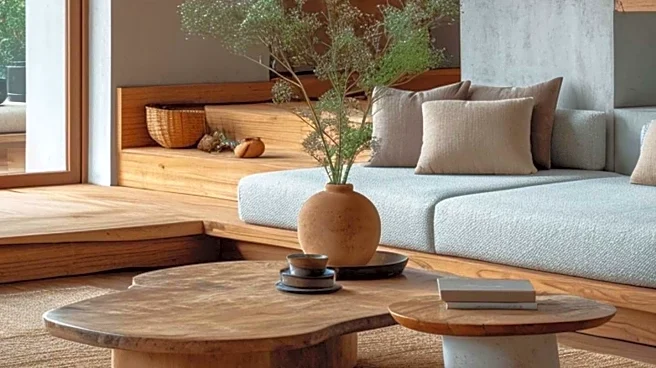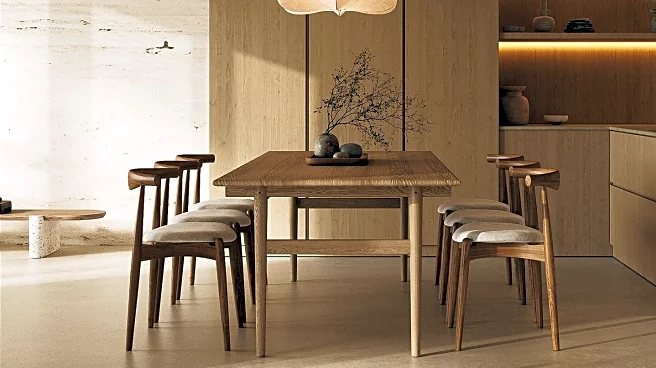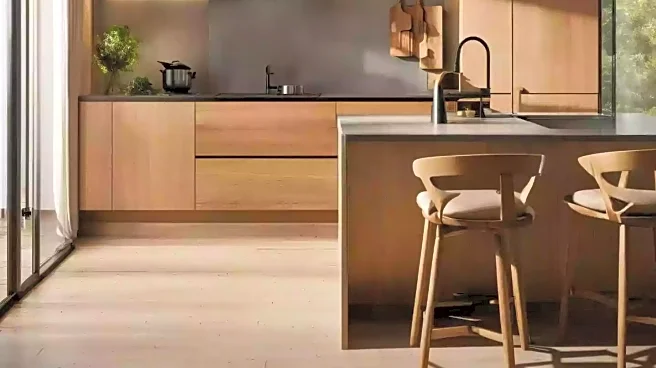What's Happening?
Honey oak, a warm-toned wood popular in the 1990s, is experiencing a resurgence in home design. Interior designers are rebranding it as 'natural oak' to avoid the dated connotations associated with its previous name. The wood is being used in kitchens, floors, and furniture, appealing to clients seeking a natural, spa-like feel in their homes. Designers are modernizing honey oak by altering its finish, shape, and texture, moving away from the ornate paneling and decorative trim of the past. The current trend favors a matte finish and flat panels, which offer a contemporary look while maintaining the wood's traditional warmth.
Why It's Important?
The revival of honey oak reflects a broader shift in interior design towards natural and handmade aesthetics. This trend is significant as it marks a departure from the cool tones that dominated home design during the Great Recession. The renewed interest in honey oak suggests a growing preference for warmer palettes that create inviting and comfortable spaces. This shift could influence the materials and styles used in new home constructions and renovations, impacting the home improvement industry. Homeowners and designers stand to benefit from the versatility of honey oak, which complements various color schemes and textures.
What's Next?
As honey oak continues to gain popularity, designers may explore further innovations in its application, such as combining it with contrasting materials and colors to enhance its appeal. The trend could lead to increased demand for quality wood products, encouraging manufacturers to produce more sustainable and durable options. Homeowners with existing honey oak features might embrace the trend by integrating modern elements into their spaces, potentially boosting the market for home renovations. The evolution of honey oak's use in design could also inspire new styles and techniques in interior decoration.
Beyond the Headlines
The resurgence of honey oak highlights the cyclical nature of design trends and the importance of adaptability in the industry. It underscores the value of quality materials that withstand the test of time, as many homeowners retain honey oak for its durability. This trend also reflects a cultural shift towards appreciating imperfections and authenticity in design, aligning with broader movements in sustainable and minimalist living. The embrace of honey oak may encourage a reevaluation of other once-popular materials, fostering innovation and creativity in home design.












